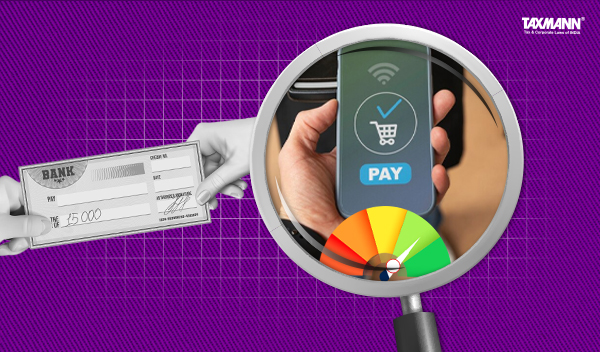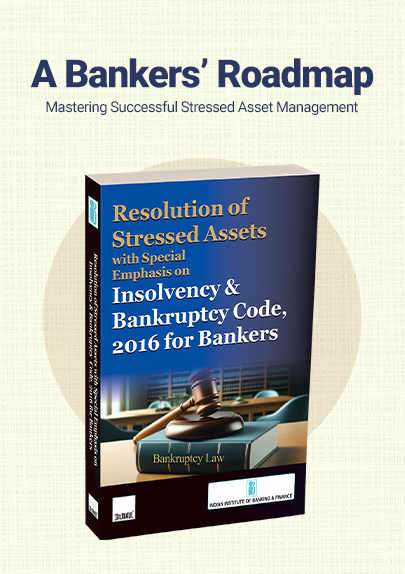[Analysis] RBI’s Initiatives – UPI Transaction Limit Increase | Digital Lending Apps Repository | Faster Cheque Clearance
- Blog|Advisory|FEMA & Banking|
- 4 Min Read
- By Taxmann
- |
- Last Updated on 12 August, 2024
The Reserve Bank of India (RBI) has introduced several key initiatives to strengthen India's digital and financial infrastructure. These measures aim to enhance convenience, boost security, and promote inclusivity across digital transactions. This represents significant steps toward a more inclusive and efficient financial ecosystem, reflecting the RBI's ongoing commitment to improving the digital transaction framework in India.
Table of Contents
- Introduction
- Increase in Transaction Limit for Tax Payments via UPI to Rs 5 Lakh
- ‘Delegated Payments’ Facility in UPI to Set Transaction Limits
- Public Repository for Digital Lending Apps to Combat Unauthorised Players
- Proposal to Increase Frequency of Reporting Credit Information to CICs
- RBI Proposes to Expedite Cheque Clearance to a Few Hours
1. Introduction
The Reserve Bank of India (RBI), via Press Release No. 2024-2025/852, dated August 8, 2024, has announced a series of innovative measures designed to enhance the digital and financial ecosystem. These initiatives aim to increase convenience, improve security, and promote inclusivity in digital transactions. Key proposals include:
- Raising the transaction limit for tax payments via UPI from Rs 1 lakh to Rs 5 lakh,
- Introducing a ‘Delegated Payments’ facility via UPI,
- Establishing a public repository for digital lending apps to curb unauthorised players, and
- Accelerating cheque clearance to just a few hours.
The key highlights of these proposals are discussed in detail below.
2. Increase in Transaction Limit for Tax Payments via UPI to Rs 5 Lakh
UPI, known for its seamless features, has emerged as the preferred payment mode. Presently, the UPI transaction limit is capped at Rs 1 lakh. Considering various use cases, the RBI has periodically reviewed and enhanced the limits for certain categories like capital markets, IPO subscriptions, loan collections, insurance, medical, and educational services. Recognising the regular and high-value nature of direct and indirect tax payments, the RBI has decided to raise the limit for tax payments via UPI to Rs 5 lakh per transaction.
| Comments |
| This adjustment will significantly boost convenience for taxpayers, enabling more effective high-value payments. It aims to streamline the tax payment process, lessen dependence on traditional banking methods, and encourage digital payment adoption. It is also likely to increase overall digital transaction volumes, fostering a more inclusive financial ecosystem. |
3. ‘Delegated Payments’ Facility in UPI to Set Transaction Limits
With a vast user base of 424 million individuals, the potential for UPI’s expansion remains significant. The RBI plans to introduce a ‘Delegated Payments’ feature, allowing a primary user to set a UPI transaction limit for another individual (secondary user) linked to the primary user’s bank account. This feature is anticipated to extend the reach and usage of digital payments nationwide.
| Comments |
| This enhancement is poised to significantly broaden UPI’s user base by facilitating more individuals to conveniently partake in digital transactions. It promotes financial inclusion by making digital payments accessible to those who may not have direct control over a bank account. |
4. Public Repository for Digital Lending Apps to Combat Unauthorised Players
On September 2, 2022, the Reserve Bank of India (RBI) issued guidelines addressing various concerns in digital lending, including protecting customers’ interests, data privacy, issues related to interest rates, recovery practices, and the prevalence of mis-selling. Despite these guidelines, media reports have indicated that unauthorised digital lending players continue to operate, falsely claiming affiliations with RBI-regulated entities (REs).
To assist customers in verifying the authenticity of Digital Lending Apps’ (DLAs) claims of association with REs, the RBI plans to establish a public repository of DLAs officially deployed by REs. This repository will be accessible on the RBI’s official website.
Additionally, the repository will compile data submitted directly by the REs without any intervention from the RBI. It will be regularly updated based on reports from the REs, including adding new DLAs or removing existing ones.
| Comments |
| This initiative is designed to increase transparency and protect customers from fraudulent digital lending apps by enabling them to verify the legitimacy of these apps directly. It also aims to restrict the activities of unauthorised players who falsely claim connections with RBI-regulated entities. Ultimately, this will ensure customers have reliable and current information regarding authorised digital lending apps. |
5. Proposal to Increase Frequency of Reporting Credit Information to CICs
Currently, credit institutions (CIs) are obligated to report the credit information of their borrowers to credit information companies (CICs) every month or at shorter intervals, as agreed upon mutually by the CI and CIC. To provide a more current snapshot of a borrower’s financial obligations, the RBI has resolved to enhance the frequency of this reporting, shifting from monthly to fortnightly intervals or even more frequently, depending on agreements between the CI and CIC.
Adopting a fortnightly reporting rhythm will ensure that credit reports generated by CICs offer more updated data, which will benefit both borrowers and lenders (CIs).
| Comments |
| This measure signifies a major advancement in increasing the accuracy and timeliness of credit information, which will improve risk assessment and decision-making for lenders. It also ensures that borrowers’ credit histories are refreshed more frequently, facilitating fairer access to credit. |
6. RBI Proposes to Expedite Cheque Clearance to a Few Hours
The current Cheque Truncation System (CTS) completes cheque processing within a cycle of up to 2 working days. To boost the efficiency of cheque clearing, minimise participant settlement risks, and enhance customer experience, the RBI has proposed a shift from the existing batch processing approach to a continuous clearing model with ‘on-realisation-settlement’. Under this proposed system, cheques would be scanned, presented, and cleared within a few hours and continuously during business hours. This would reduce the clearing cycle from the current T+1 days to a few hours.
| Comments |
| This proposal aims to enhance the efficiency of the cheque-clearing process by reducing the time from T+1 day to a matter of hours, thereby improving the overall customer experience. It also seeks to mitigate settlement risks for participants and ensure faster, more secure transactions. Additionally, continuous clearing with ‘on-realisation settlement’ will streamline banking operations and provide quicker access to funds for account holders. |
Disclaimer: The content/information published on the website is only for general information of the user and shall not be construed as legal advice. While the Taxmann has exercised reasonable efforts to ensure the veracity of information/content published, Taxmann shall be under no liability in any manner whatsoever for incorrect information, if any.

Taxmann Publications has a dedicated in-house Research & Editorial Team. This team consists of a team of Chartered Accountants, Company Secretaries, and Lawyers. This team works under the guidance and supervision of editor-in-chief Mr Rakesh Bhargava.
The Research and Editorial Team is responsible for developing reliable and accurate content for the readers. The team follows the six-sigma approach to achieve the benchmark of zero error in its publications and research platforms. The team ensures that the following publication guidelines are thoroughly followed while developing the content:
- The statutory material is obtained only from the authorized and reliable sources
- All the latest developments in the judicial and legislative fields are covered
- Prepare the analytical write-ups on current, controversial, and important issues to help the readers to understand the concept and its implications
- Every content published by Taxmann is complete, accurate and lucid
- All evidence-based statements are supported with proper reference to Section, Circular No., Notification No. or citations
- The golden rules of grammar, style and consistency are thoroughly followed
- Font and size that’s easy to read and remain consistent across all imprint and digital publications are applied







 CA | CS | CMA
CA | CS | CMA


